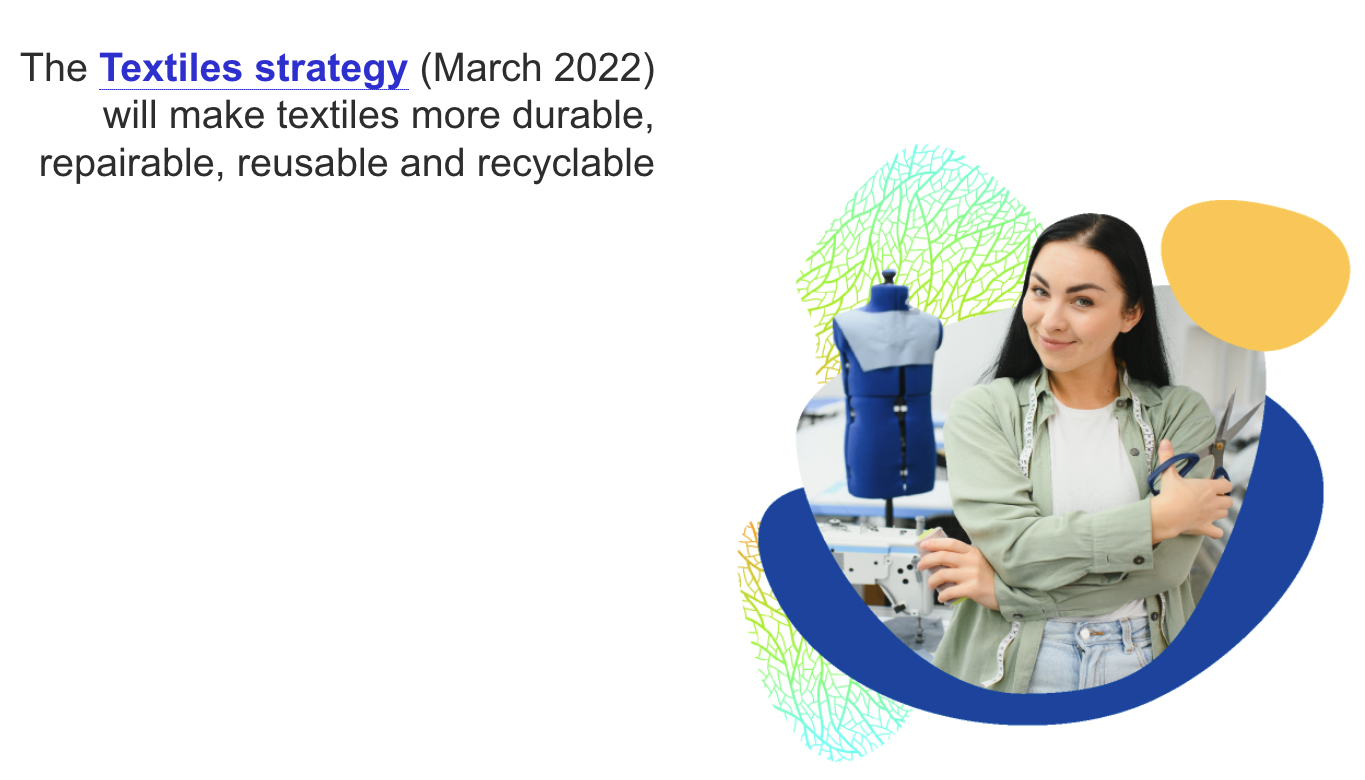Recently, the European Union released a Competitiveness Compass for the EU, reaffirming its unwavering commitment to achieving carbon neutrality by 2050. As a mid-term target, the EU has set a goal of reducing carbon emissions by 90% by 2040.
Textile consumption in the EU ranks fourth in terms of environmental and climate impact, following food, housing, and transportation. As a key focus area, the EU has introduced policies such as the Circular Economy Action Plan, Ecodesign for Sustainable Products Regulation, and EU Strategy for Sustainable and Circular Textiles. These policies aim to empower consumers and impose sustainability requirements on producers and retailers, mitigating the environmental impact of textiles. Given the significant implications of these regulations for China’s textile exports to the European market, what proactive measures should Chinese exporters take to ensure smooth market entry?
EU textile low-carbon transition regulations
The EU is among the most advanced regions in the world regarding climate change policies. In 2019, the EU introduced the European Green Deal, aiming to make Europe the first climate-neutral continent. In 2020, the EU launched a new Circular Economy Action Plan, one of the main pillars of the Green Deal, which includes a series of regulatory initiatives, among them the EU Strategy for Sustainable and Circular Textiles.

In 2021, the EU formally incorporated its 2030 and 2050 carbon targets into the European Climate Law, mandating a 55% reduction in emissions by 2030 compared to 1990 levels and achieving carbon neutrality by 2050. This was followed by the "Fit for 55" legislative package, which aims to translate climate targets into legally binding measures.
To facilitate the transition to a circular economy and achieve green, low-carbon development, the EU has structured its policies around the European Green Deal. Key implementation plans, such as the Circular Economy Action Plan, set the foundation for sector-specific regulations across textiles, packaging, plastics, food, and construction, progressively covering all industries under low-carbon legislation.
Below is a summary of key regulations related to textiles and corporate compliance requirements:
Circular Economy Action Plan
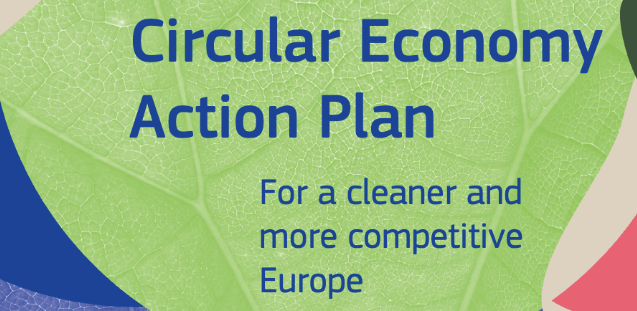
This initiative aims to minimize the negative environmental impact of products throughout their lifecycle. Textiles that fail to meet sustainability criteria will be barred from sale in the EU, and products marketed in Europe must disclose carbon footprint and environmental information.
EU Strategy for Sustainable and Circular Textiles
This strategy focuses on the entire lifecycle of textile products, aiming to create a more environmentally friendly, competitive, and resilient industry. It requires textiles to have digital product passports that provide comprehensive sustainability information, including carbon footprint data.
Ecodesign for Sustainable Products Regulation (ESPR)
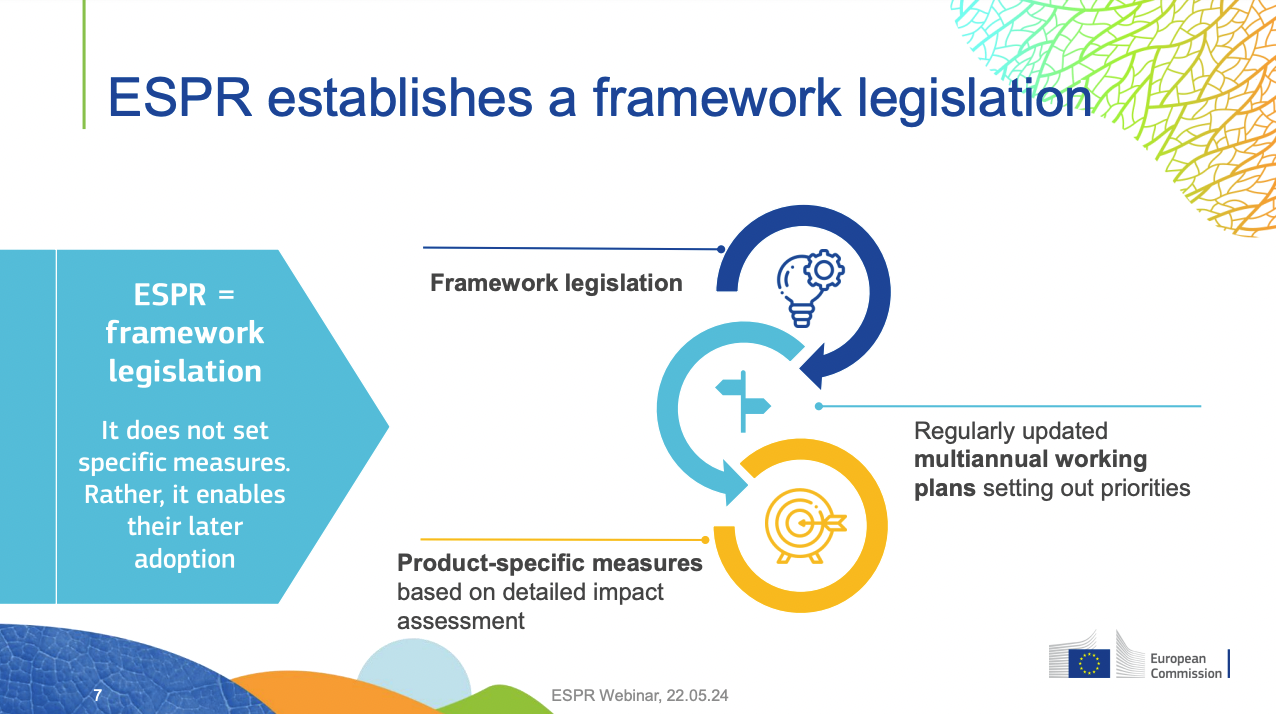
ESPR mandates that products must meet eco-design criteria before being marketed in the EU. The regulation aims to enhance product sustainability while reducing overall carbon and environmental footprints throughout their lifecycle. Additionally, ESPR includes specific requirements on digital product passports, green public procurement, and the prohibition of destroying unsold consumer goods. Textiles have been identified as a priority category, with the EU planning to release its first work program under ESPR in 2025.
Empowering Consumers for the Green Transition Directive
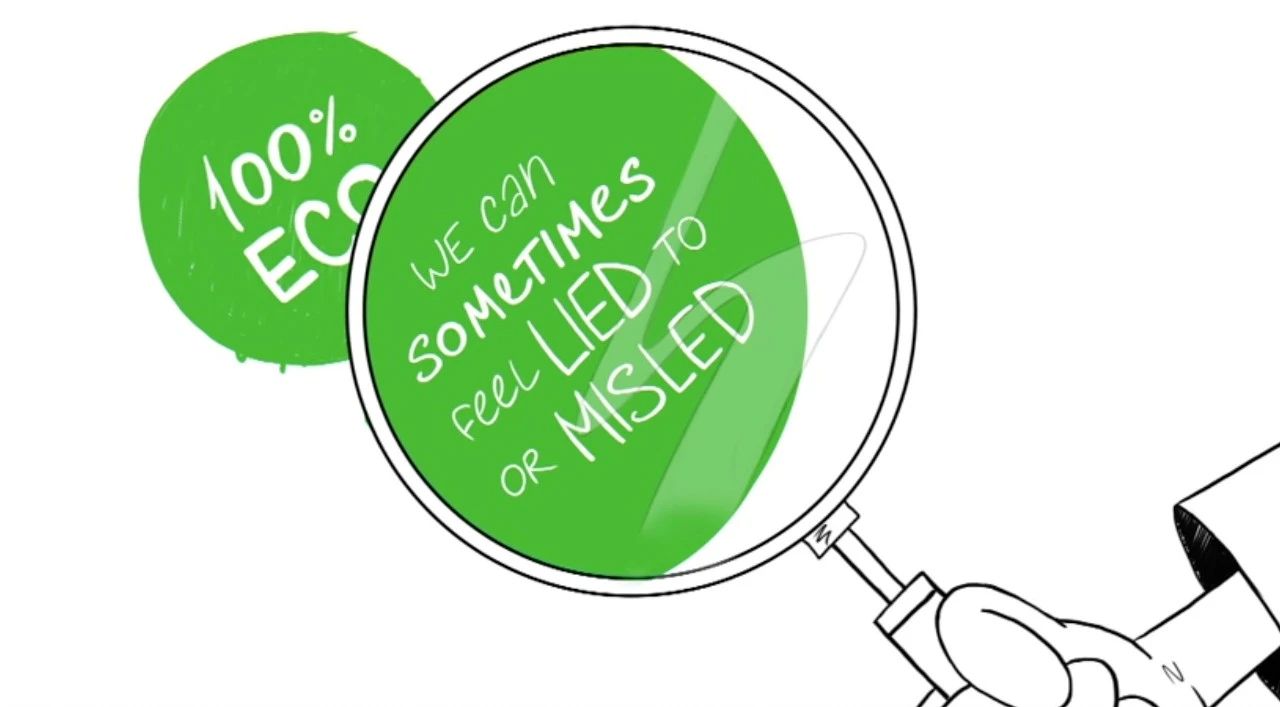
This directive aims to promote sustainable consumption by enabling consumers to make informed purchasing decisions while preventing misleading commercial practices. It prohibits four types of deceptive green claims: self-certified environmental labels, unsupported sustainability claims, exaggerated environmental benefits, and carbon-neutral claims based solely on offsetting. The ultimate goal is to drive carbon reduction across global supply chains.
Waste Framework Directive
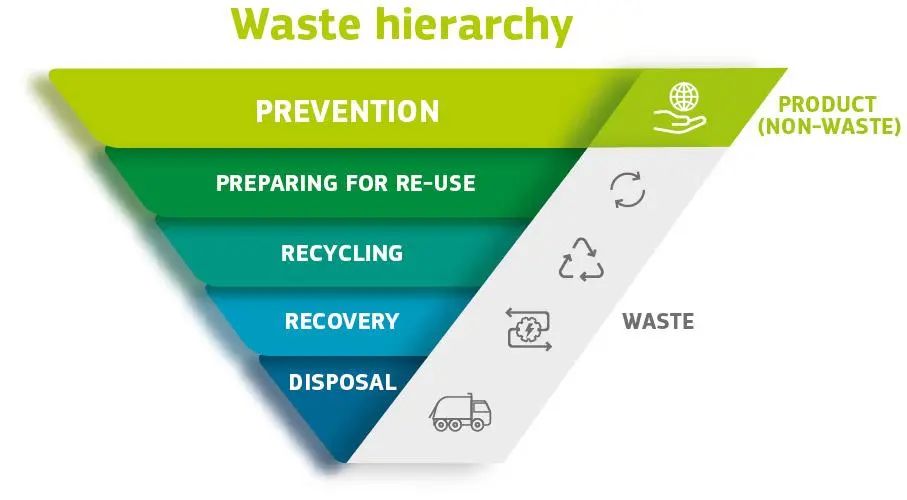
As the EU's primary waste management legislation, this directive mandates that all EU member states establish a textile waste collection system by January 1, 2025. A proposed amendment released in July 2023 emphasizes textile waste management, introducing a mandatory and unified Extended Producer Responsibility (EPR) program across EU nations.
Textile Labelling Regulation(EU) 1007/2011
This regulation requires that textiles sold in the EU bear appropriate labels. The EU Commission initiated an update to this regulation in 2023, placing particular emphasis on environmental information, with the revised version expected in Q3 2025.
Corporate Sustainability Reporting Directive (CSRD)
CSRD requires companies within its scope to disclose climate mitigation-related information, including Scope 1, 2, and, where applicable, Scope 3 greenhouse gas emissions.
Transition Pathway for the Textiles Ecosystem / European Circular Economy Stakeholder Platform
Published in 2023, these initiatives foster collaboration among industry stakeholders, public authorities, and social partners to accelerate the sustainable transformation of the textile industry.
How Should Chinese Textile Exporters Prepare?
For Chinese textile manufacturers exporting to the EU—whether upstream suppliers of yarn and fabric or downstream garment producers—these evolving regulations present "green barriers" that must be addressed.
Additionally, major multinational companies are integrating product carbon footprints into their sustainable supply chain criteria. For instance, Fast Retailing (owner of Uniqlo and GAP) now requires its suppliers to provide carbon footprint data as part of procurement qualifications. Shanghai Tiqiao Textile Dyeing & Finishing Co., Ltd. (Tiqiao Textile), a supplier to Uniqlo and GAP, was required to conduct carbon footprint assessments to align with Fast Retailing’s sustainability strategy. With the support of Carbon Newture, Tiqiao Textile not only completed carbon footprint certification for its yarn products but also obtained carbon neutrality certification for its core product—air-layer fabric—strengthening its credibility with downstream clients.
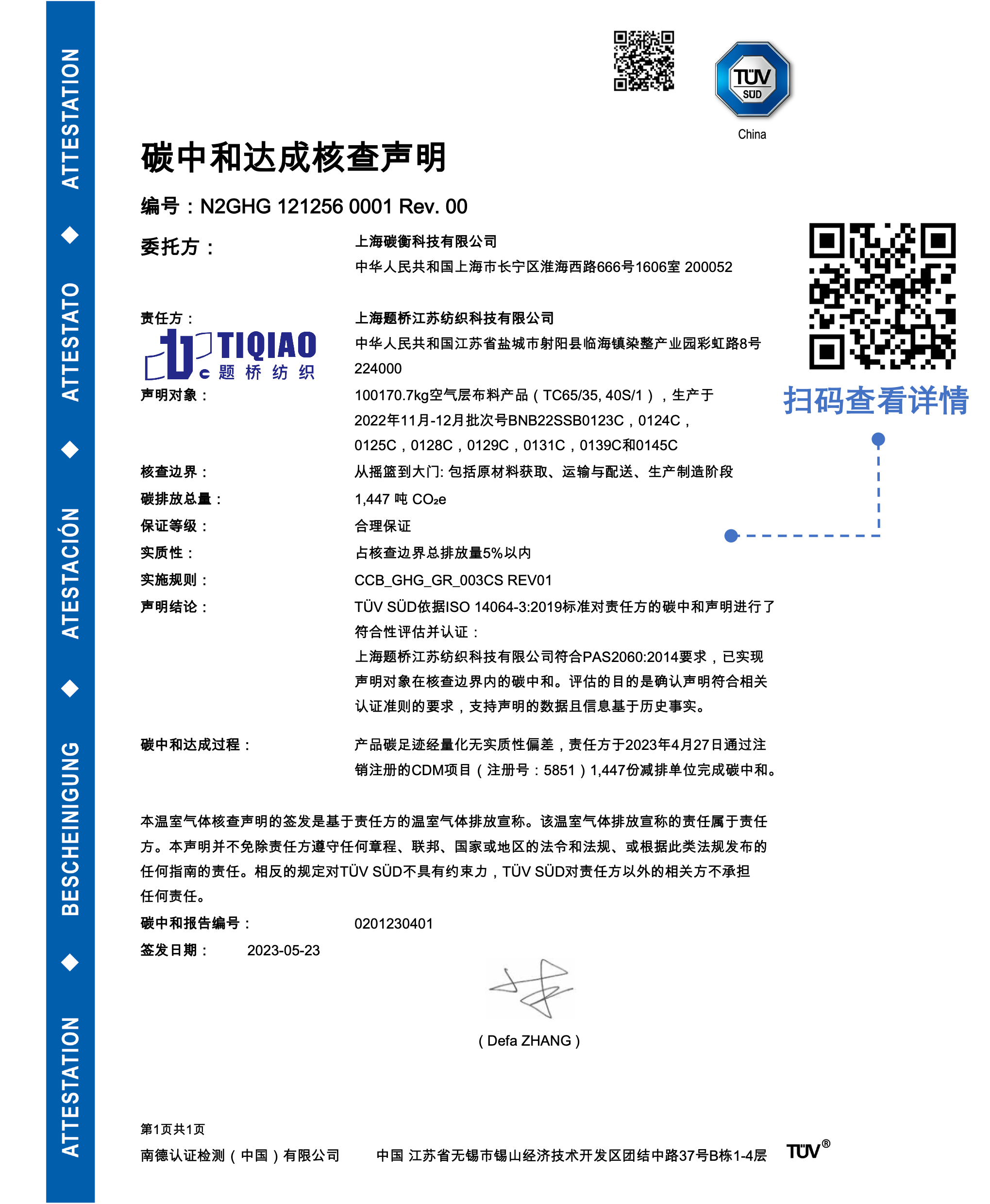
How Can Companies Overcome the "Green Barrier" and Gain a Market Advantage?To navigate these regulatory challenges and seize new opportunities, Chinese textile companies should focus on the "Three-Step Carbon Reduction Approach": Carbon Management , Carbon Target Setting, Carbon Performance Optimization.
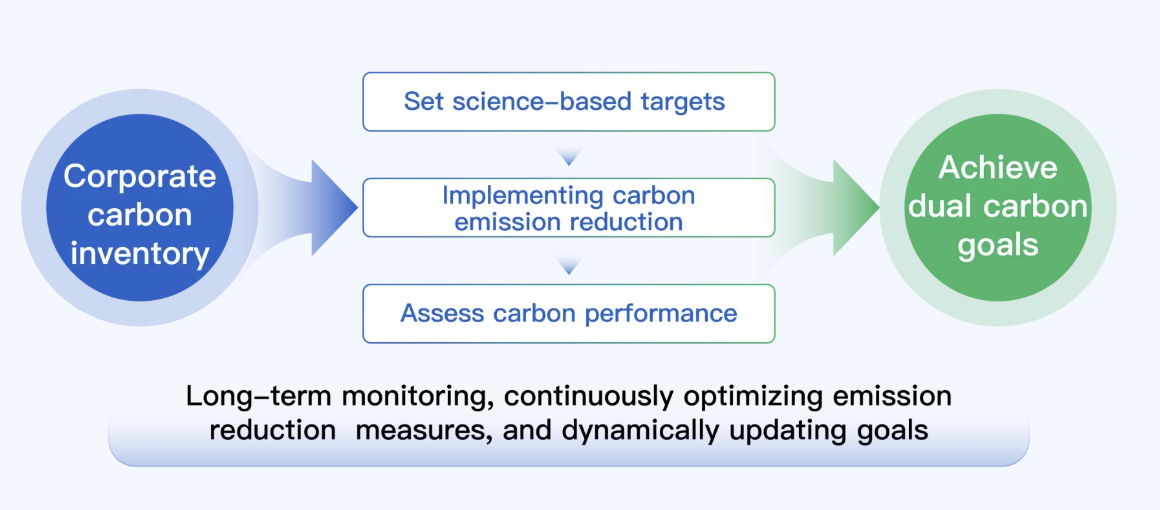
Carbon Management
Carbon accounting is the foundation of effective carbon management. Companies should work with professional organizations to:
Calculate organizational carbon emissions (e.g., factory operations, retail store activities)
Assess product carbon footprints to identify major emission sources
Pinpoint emission hotspots (high-emission processes that are feasible to improve)
Develop scientifically backed carbon reduction strategies
For midstream and downstream supply chain enterprises, tracking supply chain emissions is crucial, as Scope 3 emissions typically account for over 75% of total emissions.
Carbon Target Setting
Once emission data is gathered, companies should define tailored, science-based carbon reduction targets aligned with their business strategy. Setting clear targets supports innovation in low-carbon technologies, ensures compliance with regulatory requirements, enhances competitiveness, and strengthens supply chain sustainability.
Carbon Performance Optimization
Key measures to enhance carbon performance include: Increasing the use of clean energy, Implementing energy-efficient technologies, Prioritizing low-carbon raw materials, Conducting low-carbon training for employees. Beyond improving environmental performance, these actions also lower operating costs, strengthen brand sustainability credentials, and boost profitability. Additionally, companies can apply for green loans tied to carbon footprint performance to support their transition while easing financial burdens.
As global and domestic regulations evolve, the textile industry faces increasingly stringent requirements for green production, labeling, and marketing. Future regulations will impose even more detailed sustainability standards, requiring companies to proactively adapt. By embracing low-carbon transformation and aligning with international trade trends, Chinese textile exporters can ensure smooth, sustainable access to global markets.
